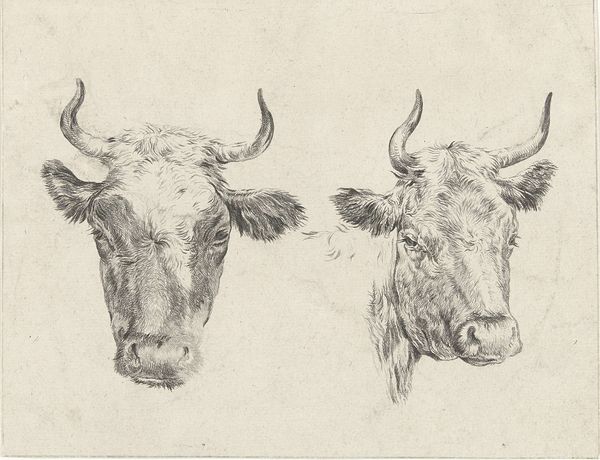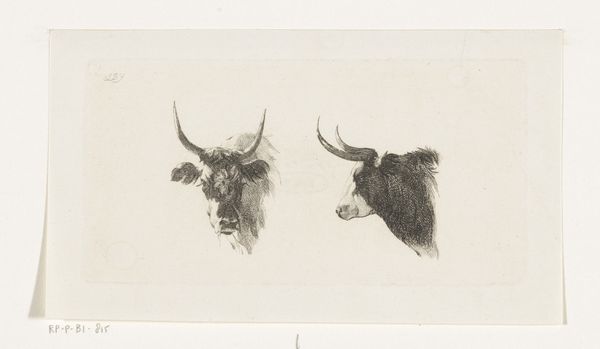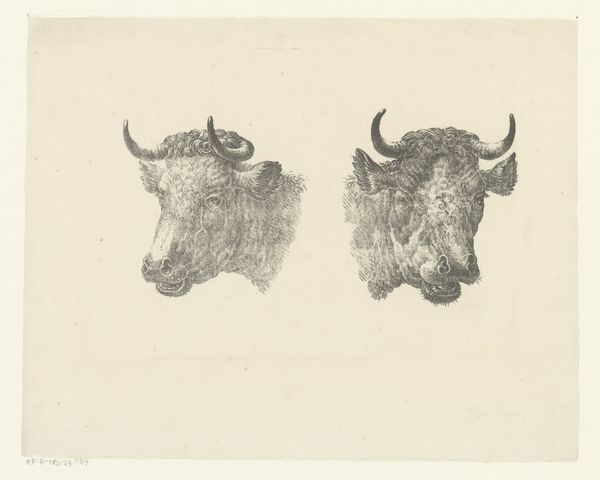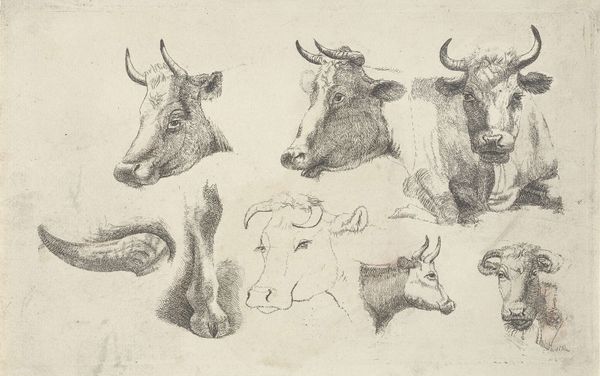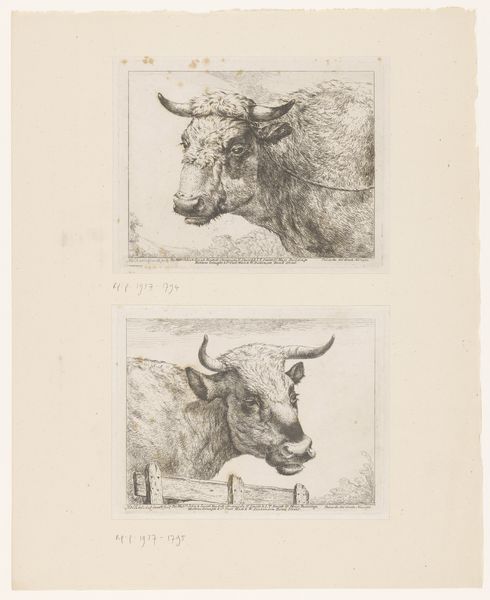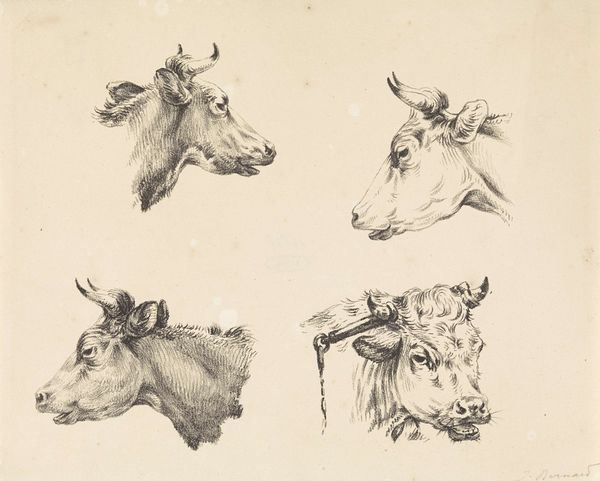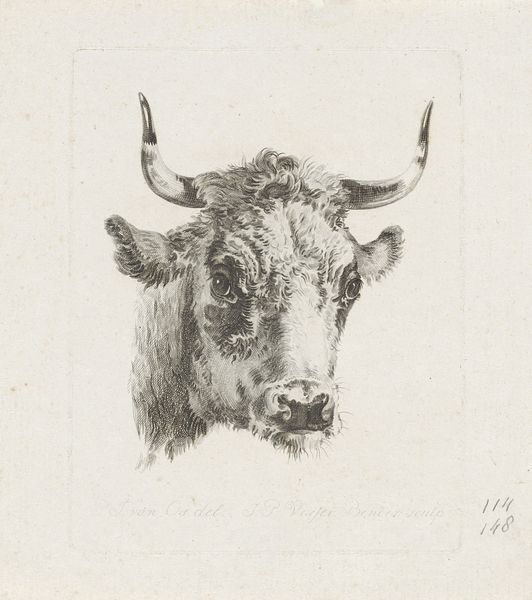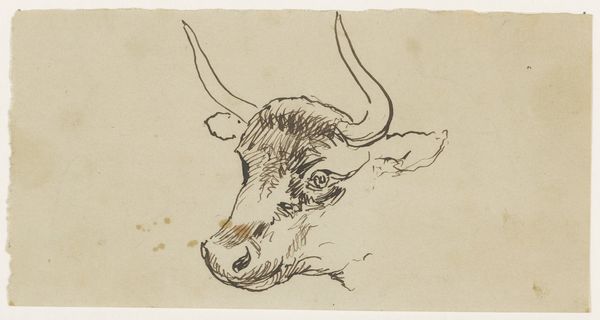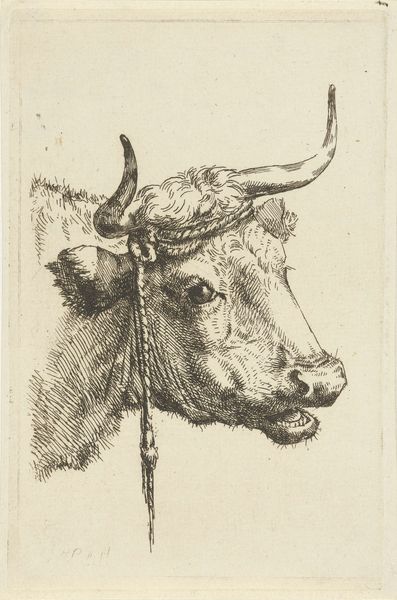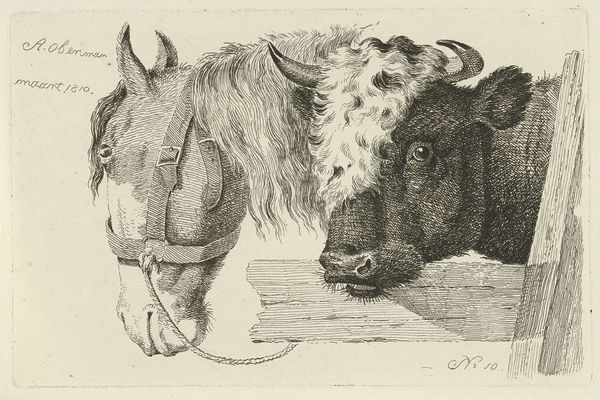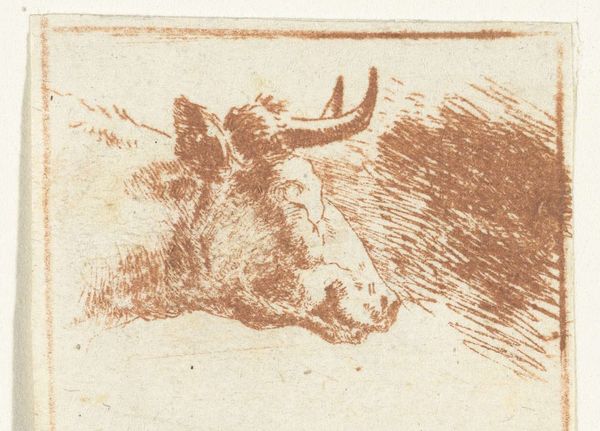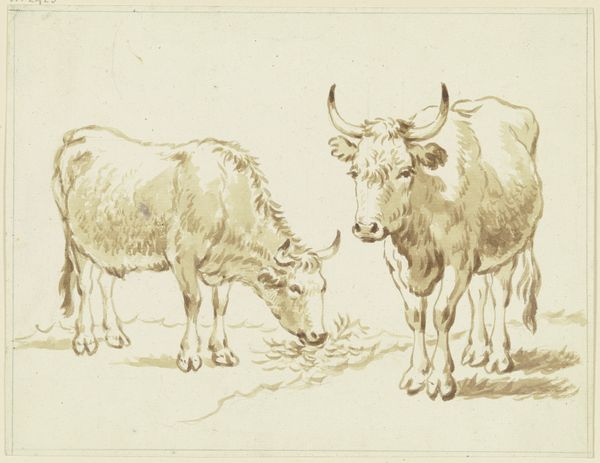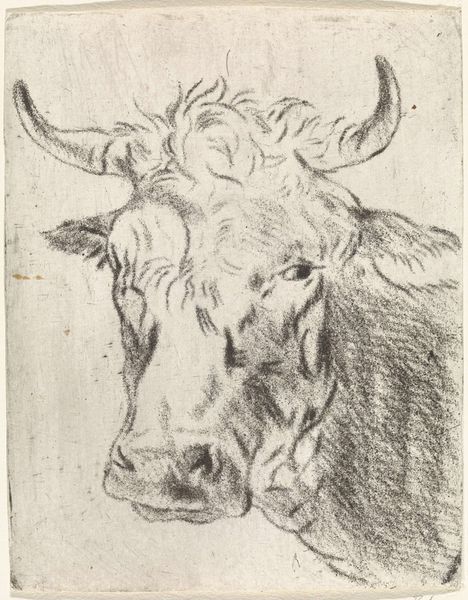
drawing, print, etching
#
portrait
#
drawing
#
16_19th-century
#
dutch-golden-age
# print
#
etching
#
realism
Dimensions: height 145 mm, width 199 mm
Copyright: Rijks Museum: Open Domain
Editor: This etching, "Twee koeienkoppen," or "Two Cow Heads," by Jan (II) Kobell, created in 1801, is surprisingly captivating. There's an interesting contrast in the textures used to depict the two animals, despite the simplicity of the medium. What strikes you when you look at this piece? Curator: The artist's deliberate choice of etching allows for a remarkable exploration of line and form. Observe how the varying density and direction of the etched lines articulate the musculature and bony structures of the cows' heads. It's a study in controlled mark-making. Notice too, the contrasting approaches to each head: the left displays a smoother finish, prioritizing outline, whereas the right uses much shorter strokes to render light and shadow with an almost painterly effect. Editor: So, the focus isn't really about portraying the cows themselves, but rather about showcasing the possibilities within the etching technique? Curator: Precisely. The subject matter is secondary to the artist's investigation of the medium's potential for rendering form and texture. Ask yourself what he communicates with the use of drypoint marks that create burr and thus velvety texture. Also, is the spatial organization random, or carefully constructed, for formal contrast, balance, or tension? These are crucial components when analyzing the work. Editor: I see it now! It's almost like Kobell is presenting us with two different etching styles within a single print. I never would have considered focusing solely on the technique like that. Curator: Indeed. By isolating the cow heads and minimizing the background, the artist directs our attention to the fundamental elements of the composition: line, tone, and texture. Approaching it from this perspective is key. Editor: This formal analysis has really changed how I see the piece. I'm struck by the artist’s focus on composition now. Curator: And this rigorous examination of visual form is exactly where meaning resides.
Comments
No comments
Be the first to comment and join the conversation on the ultimate creative platform.
